If you have a delightful frilled lizard as a pet or are considering having one, you should know that a thorough pet care sheet is provided for such lizards. The scientific name given to Frilled lizards is Chlamydosaurus kingii; they are mainly known for their unique neck frill, a threat posture when opening. This article will educate about some of the main questions regarding ownership of the frilled lizard, such as its habitat, diet and nutrition, health and care, behavior, and social needs. It is important to understand such key factors so that your pet’s environment can be tailored to meet, at the very least, its fundamental basics to ensure your frill-perfect pet’s welfare without any hassles. The guide will also discuss the specific issues that most carers report facing and the science-based strategies that enable them to overcome such challenges, making it an all-inclusive and in-depth guide that will be very useful to beginners and experts of reptiles alike.
What is a Frilled Lizard and Why is it Popular as a Pet?
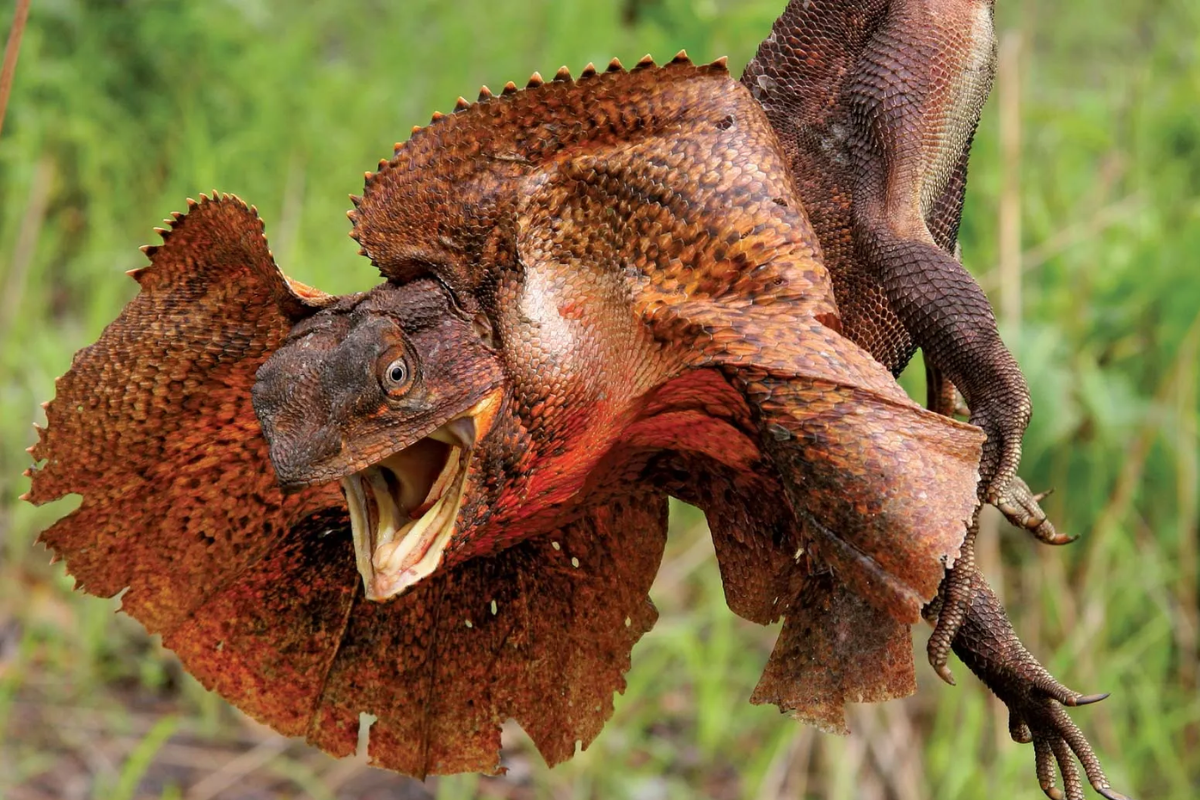
The frilled lizard is a reptile lizard type belonging to the Agamidae family, mostly found in the northern parts of Australia and southern New Guinea. This lizard can be described as possessing frills; these are powerful extensions of membrane on cartilage rings situated around the stomach and neck of the lizard. In case of danger or when it gets startled, the lizard extends the frill solely to increase the lizard’s appearance, thus scaring enemies away. Apart from its defensive pose, the frilled lizard has found a place in the hearts of many pet lovers due to their unusual look, size, and engaging behavior. The animal is naturally curious and has great tolerance for humans, so it’s only a plus when this animal’s great looks match this trait. As such, the frilled lizard captures the imagination of amateur pet owners wanting a striking exotic reptile with a lot to offer.
The Unique Characteristics of Frilled Lizards
As for other unusual traits, I point out the lizards’ frill, which is simply astonishing: their ability to run fast and their life in trees. When the frilled lizard senses danger, the frill protects him by expanding into a broad oval from its original state when folded. Along with bipedal sprinting, this feature assists frilled lizards in getting away from predators. Also, these lizards mostly dwell in trees, inhabiting forested areas with peculiar and adaptive habits. They are diurnal so they show activity during the day, looking for insects and small vertebrates, which is fascinating to watch. Frilled lizards are unique in more ways than one, they have unique outward features and so do their ecological adaptations.
History and Origin: From New Guinea to Your Home
I explore the mystery of the frilled lizard — Chlamydosaurus kingii, and from where the lizard hails. Its origins lie in the peculiar landscapes of northern Australia and southern New Guinea. These reptiles have differentiated themselves to fit different climates, from monsoonal rainforests to timbered grass plains. As for this evolutionary history of the frilled lizards, it is also evident that they have become well suited to an epicuticular life where certain degrees of environmental constraints led to the development of their frills and their ability to move around on two legs, which aid them in escaping dangers or threats. The first phase of what one refers to as their natural habitat to captive transition is to avoid any change in environmental parameters. This includes the room temperature for the terrarium which incorporates a warm and humid environment within the terrarium of 75°F to 90°F. The skin basking site generally has a range of 115°F. Thus the temperature of humidity should remain optimized to 50% – 70% to combat extreme dehydration and to live in combatively hydrated skin. By doing these, there are no loose technical parameters in artificially creating the natural habitats that the frilled lizard comes from, and this has numerous advantages as it prohibits unhealthy and unnatural behavior from occurring.
Why Choose a Frilled Dragon as a Pet?
Choosing a frilled dragon or lizard as a pet comes with numerous advantages for reptile enthusiasts. Their intriguing and dramatic displays, particularly the characteristic frill that they showcase when threatened, make these lizards not only a conversation starter but also a visually captivating pet. They are generally docile and tolerate handling well, making them suitable for pet owners seeking interaction. Their unique bipedal running ability and arboreal nature also provide endless fascination and amusement.
When considering their care, frilled dragons require a terrarium that reflects their natural habitat. Essential technical parameters include a temperature gradient between 75°F and 90°F (24°C to 32°C), with a basking area reaching 115°F (46°C) to accommodate their thermoregulation needs. Humidity levels should be sustained between 50% and 70% to ensure proper hydration and skin health. Maintaining these environmental conditions alongside a varied diet consisting primarily of insects and occasional fruits will ensure your frilled dragon thrives and exhibits its natural behaviors authentically. Despite their exotic care needs, these lizards are manageable with proper setup, making them an excellent choice for those looking to own an extraordinary pet.
How to Create the Perfect Enclosure for Your Frilled Lizard
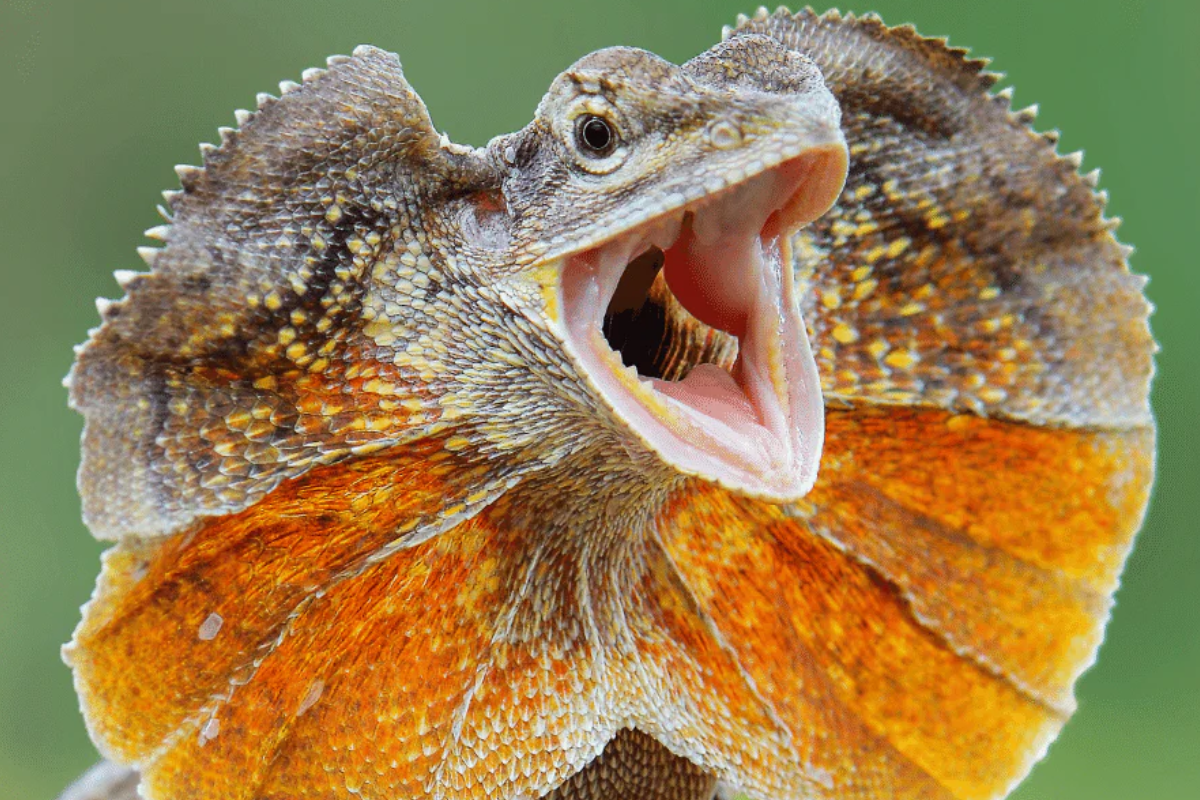
Creating an optimal enclosure for your frilled lizard is crucial for its health and well-being. The enclosure should be spacious, vertical, and well-ventilated to mimic their natural habitat. A minimum size of 3 feet long, 2 feet wide, and 4 feet high (91 x 61 x 122 cm) is recommended to accommodate their arboreal lifestyle. Use a substrate that retains humidity, such as soil and sand, to maintain a humidity level between 50% and 70%. Include sturdy branches, logs for climbing, and basking platforms since frilled lizards are avid climbers. It’s essential to provide a thermal gradient within the enclosure, with a basking spot reaching temperatures of 95-105°F (35-40°C) and a more relaxed area at 75-85°F (24-29°C). Equip the enclosure with full-spectrum UVB lighting to facilitate calcium absorption and prevent metabolic bone disease. Adding foliage and hides will offer enrichment and privacy, making the environment stimulating yet secure for your frilled companion.
Choosing the Right Substrate and Enclosure
Regarding the substrate and enclosure appropriate for my frilled lizard, I found focusing on the provision of a natural, exciting environment beneficial. After looking up the best providers, I have concluded that a mixture of soil and sand is the best substrate as it retains moisture, and it’s what the lizard is used to living in. This species ‘ health requires a relative humidity level of 50% to 70%. I also learned that the enclosure must be large, well-ventilated, and tall enough since it is conducive to their arboreal nature and instinctively promotes natural behavior. Providing large branches for climbing and basking platforms satisfies their natural climbing needs, and a thermal gradient within the enclosure assists with thermoregulation. Maintaining temperatures in the basking area between 95-105°F (35-40°C) and in the cooler areas 75-85°F (24-29°C) was stressed numerous times as necessary for their health. The use of full-spectrum UVB lighting is also essential to avoid the occurrence of metabolic bone disease. With these understandings, I am ready to construct a nurturing and safe environment for my pet.
Setting Up UVB and Humidity Levels
To ensure that your frilled lizard is in optimal health, it is necessary to maintain particular levels of humidity and UVB. Full-spectrum bulbs that provide the required rays for vitamin D3 synthesis, which permits calcium to be utilized, are of utmost importance for UVB lighting. The UVB light should be approximately 12-18 inches (30-46 cm) above the basking site. It is recommended to check and replace bulbs at least every 6-12 months.
It is also necessary to ensure that humidity levels are in a range suitable for the frilled lizard to ensure that the moisture content does not get too high. Humidity level is ideal in the range of 50% and 70% throughout the day. A hygrometer can be used for a more practical application. For humidity, water mist spray, plus a water dish in the enclosure are extra methods to increase conditions. Furthermore, a blend of soil and sand as the substrate will also assist in accomplishing these levels. Humidity at the ideal range assists in hydration and optimal respiratory health. Following these recommendations will, therefore, create the desired environment well-suited for the frilled lizard.
Essential Basking Spot and Heating Tips
Creating the right basking environment is critical for the health of a frilled lizard. These reptiles require a well-regulated thermal gradient to thrive. Set up the basking area to reach a temperature range of 95-105°F (35-40°C). This temperature is essential for promoting proper digestion and metabolic functions. Ensure that this area is easily accessible by placing sturdy branches and flat rocks that provide stable surfaces for heat absorption. The ambient temperature within the enclosure should be maintained between 75-85°F (24-29°C) to offer a more relaxed retreat.
For heating, high-quality ceramic heat emitters or basking lamps are recommended, as these can consistently provide the necessary warmth without emitting light that may disrupt the lizard’s natural cycle. Always use a reliable thermometer to accurately monitor the basking and ambient temperatures. Position the heating elements safely, ensuring they cannot come into direct contact with the lizard to prevent burns.
It is advisable to precisely incorporate a thermostat to control and prevent overheating within the enclosure. Regular checks and adjustments are necessary to adapt to seasonal variations in room temperature, ensuring the lizard’s environment remains stable year-round. Implementing these detailed strategies will contribute significantly to the well-being and longevity of your frilled lizard.
What Do Frilled Dragons Eat? Understanding Their Livefood Needs
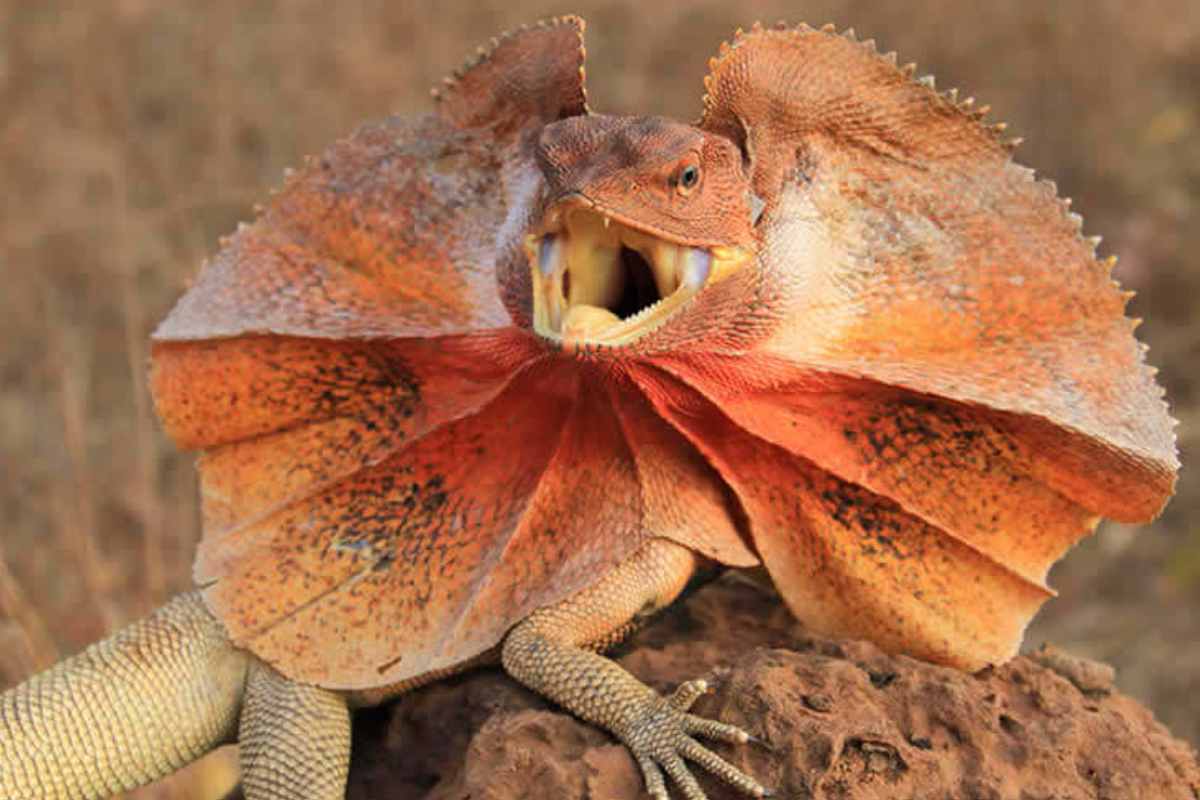
Frilled lizards are insectivorous, with their diet primarily consisting of various live insects that provide essential nutrients for their health and vitality. Feeder insects such as crickets, roaches, mealworms, and superworms serve as staple foods in captivity. Ensuring that these live foods are appropriately sized—preferably no wider than the space between the lizard’s eyes—is crucial to facilitate easy ingestion and digestion. Additionally, dusting insects with calcium and vitamin D3 supplements two to three times a week is recommended to prevent nutritional deficiencies. While frilled lizards occasionally display opportunistic feeding behaviors in the wild, sometimes consuming small vertebrates, maintaining a balanced and diverse insect diet in captivity is vital for their overall well-being. Remember that younger lizards require more frequent feedings than adults, who typically thrive on a schedule of feeding every other day.
Optimal Diet: From Crickets to Mealworms
I am able to provide a frilled lizard with the most balanced and nutritious diet thanks to delving deeply into this reptile’s dietary needs. Due to their ease of capturing and high protein levels, crickets are the most common and appropriate for repeat feedings. You make it a point to gut-load crickets before you offer them to your lizard for an added advantage. Besides crickets, I occasionally feed my lizard mealworms and superworms for variety. These are used more as treats because they are high in fat and should be only consumed occasionally by lizards. Still, their incorporation is beneficial for generating interest in feeding. Every insect offered to these pets is dusted with vitamin D3 and calcium powder, which is necessary for these lizards since it is critical for their bone growth. The amount of feed offered changes with age and activity level, from daily feedings for juveniles to every other day feedings for adults. With the careful preparation of this meal plan and thorough adherence to the guidelines, I am sure of my frilled lizard’s health maintenance.
Feeding Frequency and Care Guide
I have developed a feeding frequency schedule that is in accord with the dietary requirements of my frilled lizard. As offspring, Young frilled dragons need food daily for their appropriate growth. Once they become adults, I feed them every other day to keep their energy and health whole. As for the maintenance, I make sure that the parameters of the enclosure conditions—temperature, humidity, and lighting— as stated above: basking temperature at 95 – 105 degrees F (35 – 40 degrees C); ambient temperature 75 – 85 degrees F (24 – 29 degrees C); humidity between 50 to 70 percent. I keep a hygrometer, thermometer, and thermostat for these purposes. Other normal animals do not suffer due to these factors, and vegetation may flourish. Such well-organized work based on trustworthy sources inspires confidence in accurately fulfilling my pet’s requirements.
Providing Water Bowl and Humidity
Ensuring adequate hydration is crucial for maintaining the health of your frilled lizard. Providing a shallow water bowl is essential, as it allows the lizard access to drinking water and contributes to the enclosure’s humidity levels. It is vital to place the bowl where it cannot easily be tipped over, thereby maintaining a consistent moisture source. Water should be refreshed daily to prevent bacterial growth, ensuring it is always clean and safe for consumption. In addition to the water bowl, maintaining an appropriate humidity level of 50% to 70% is imperative for supporting respiratory health. Techniques such as misting the enclosure with dechlorinated water or using an automated misting system can be implemented to sustain these levels. Regular monitoring with a reliable hygrometer will ensure that humidity levels remain within the specified range. Positioning the water bowl away from direct heat sources for precise humidity management helps minimize rapid evaporation and ensures a stable environment. By adhering to these practices, you provide a habitat that promotes the well-being of your frilled lizard, aligning with the best care standards as determined.
How to Maintain Ideal Reptile Health and Solve Common Health Problems
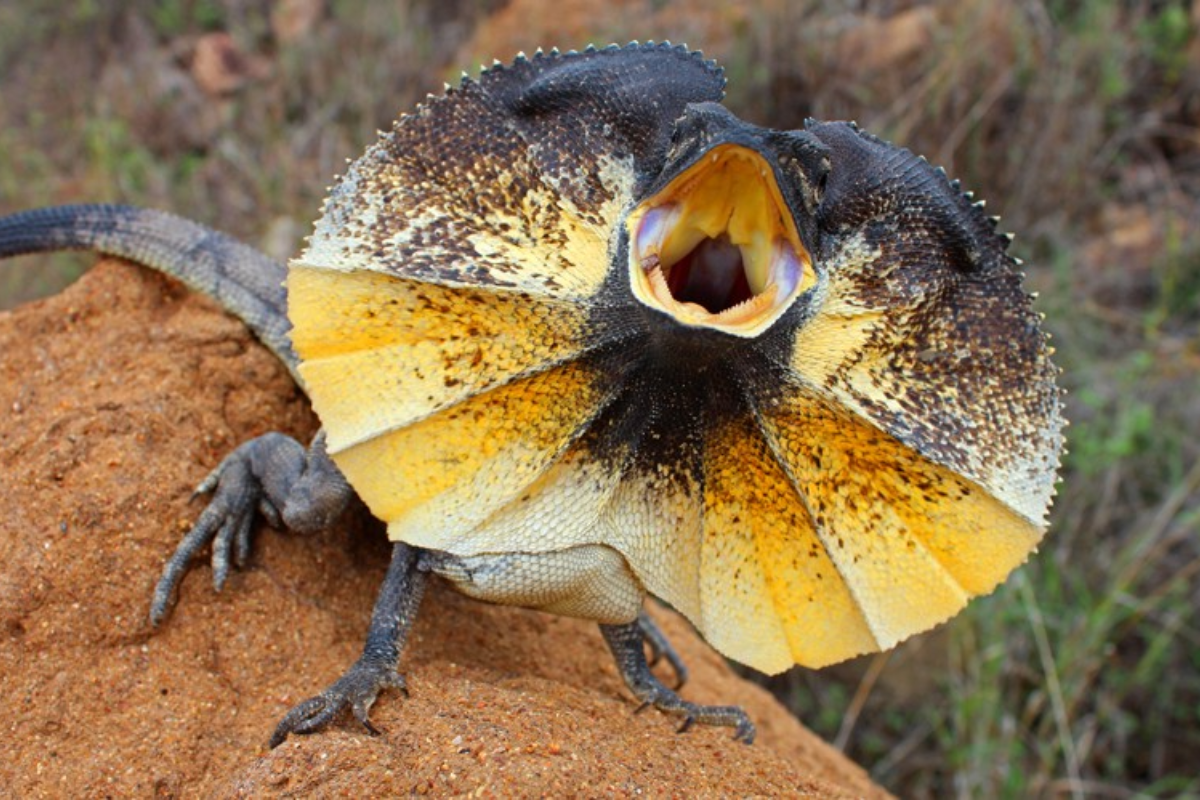
In order to provide better health to frilled lizards, it is essential to have their environment and diet as much natural as possible. Some health assessments should be performed frequently to detect any distress or disease. Others may be related to their body mass and the need for thermal regulation and UVB for metabolism and calcium absorption, respectively. However, some people may have concerns about infections or parasites, so maintaining a clean cage and addressing humidity breathing or through enclosure may help prevent these. Some others include metabolic bone disease, respiratory infections, and nutritional deficiencies brought about by lack of UVB lighting or wrong diet. If a frilled lizard is lethargic, panting, or losing weight, a reptile veterinarian should be able to record the history as soon as possible. Following the care regimen, which includes normal veterinary care and changes in the diet, will help prevent usual healthcare problems and further comorbidities that develop in the lizard.
Signs of Common Health Problems in Frilled Lizards
The iconic frilled lizard may exhibit health issues that can be easily resolved if disorders can be diagnosed early. Typical signs of conditions like metabolic bone disease include lethargy or low levels of activity, which is usually caused by low calcium in dietary intake or the absence of UVB lighting. Signs of respiratory infections include struggling to breathe, breathing through an open mouth, or nasal discharge. Such conditions are caused mainly by incorrect sheer humid levels outside the 50% to 70% range. Diseases of nutrition deficiency may be depicted by weight loss or poor appetite because of the intake of the wrong types of food, which are deficient in certain vitamins or minerals. In addition, persisting skin shedding problems are also suggestive of low humidity or inadequate body water. It is also mandatory to routinely gauge specific technical parameters, like temperature (ideal basking temperature should fall in the range of 95-105°F, ambient temperature should be 75-85°F), and humidity levels with a hydrometer and thermometer to the levels proposed and suspected health issues would be definite and not a case of suspicion. For any observed signs, immediate consultation is recommended, and timely professional advice is germane to addressing and resolving health concerns.
Preventative Care and Regular Check-Ups
To ensure my frilled lizard maintains optimal health, I prioritize preventative care and adhere to regular check-ups. I focus on maintaining consistent enclosure parameters such as temperature and humidity, alongside providing a well-balanced diet rich in necessary nutrients. I conduct frequent health inspections, looking out for signs of common ailments such as lethargy or respiratory distress, to catch any issues early. Regular veterinary check-ups are integral, allowing for professional assessments and guidance on dietary adjustments or medical interventions. By combining diligent in-home care with expert evaluations, I can confidently support my lizard’s longevity and vitality.
When to Consult a Reptile Veterinarian
I recognize the importance of timely veterinary consultation to ensure my frilled lizard’s well-being. I am vigilant about any deviations from normal behavior, such as lethargy, appetite loss, or respiratory difficulties like labored breathing or nasal discharge, which may indicate serious health issues. Technical parameters such as maintaining basking temperatures between 95-105°F, ambient temperatures of 75-85°F, and humidity levels from 50% to 70% are critical to avoiding common health problems. If these parameters are within range yet my lizard displays signs of distress or illness, I act promptly by consulting a reptile veterinarian. This proactive approach enables early diagnosis and effective treatment, aligning with the best practices recommended by experts.
Where to Find Captive Bred Frilled Lizards for Sale
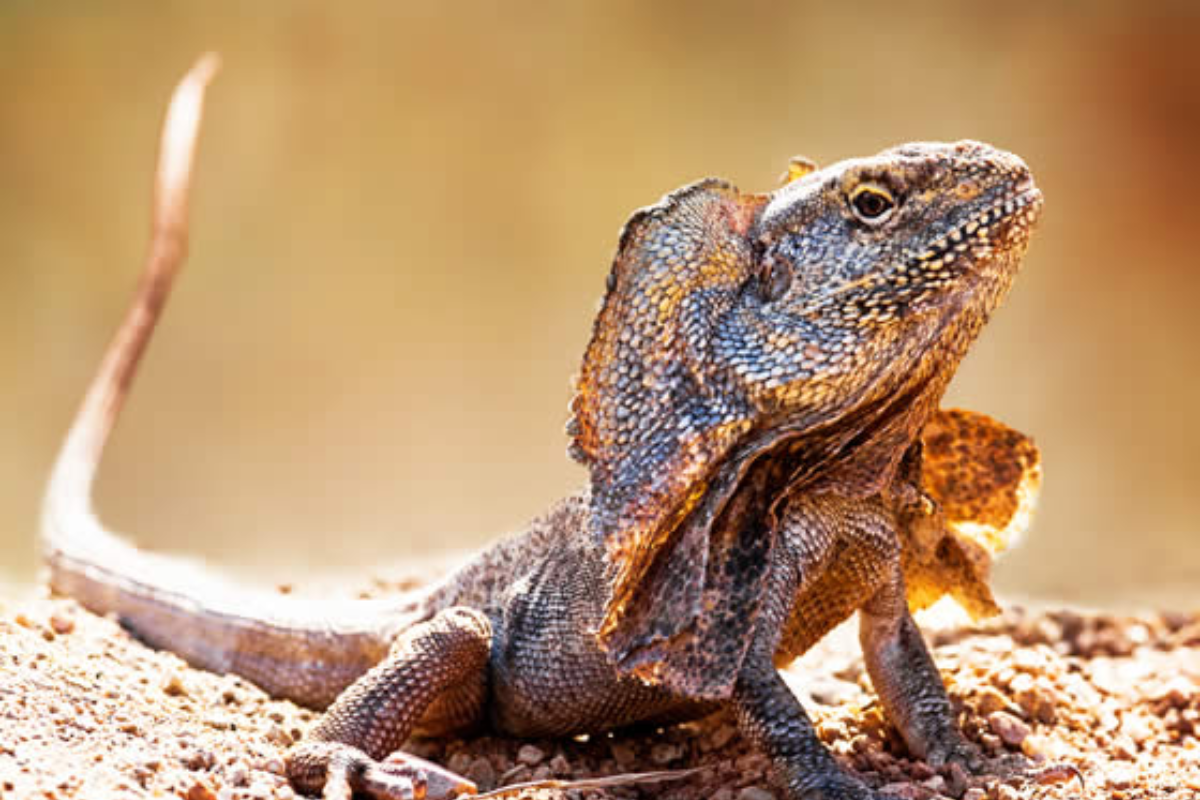
One must look for reputed breeders and specialty reptile shops to find captive-bred frilled lizards. Select breeders who do not practice unethical breeding and have a proven track record of breeding healthy parent stock. There are also recommendations and review services for breeders in various online reptile forums and communities. Also, meeting the breeders at reptile expos or fairs and seeing the condition of the lizards may help. It is essential to check the knowledge of the thesaurus regarding the frilled lizard breed, including their care and genetics, to make sure these animals can be healthy and in captivity. Always ensure that valid health certificates are available and discuss details about the lizard – its diet and age, and whether any illness was experienced before.
Understanding the Pet Trade and Ethical Considerations
My desire to acquire a frilled lizard has enhanced my understanding of pet ownership issues. It is evident that the responsibility of ownership goes beyond simply making a purchase; it encompasses an assessment of the animals’ available breeding and housing facilities. It is of utmost importance to patronize those breeders who engage in practices that prevent further depletion of lizard populations and emphasize breeding in cages instead of the wild. I will not accept anything less than a complete and well-documented breeding history that includes respect and ethics in the acquisition process. Once I become a frilled lizard keeper, I will make decisions that follow ethical guidelines and help conserve the species, just as the experts recommend.
Tips for Choosing a Reputable Breeder
To get a frilled lizard, I seek information regarding trustworthy breeders from the internet and follow such recommendations. First, I check their history of ethical practice and ability to create stable captive animals by cross-examining the breeder’s breeding record and the reputation the breeder holds in the reptile community. Getting in touch with the breeder is very important, as I have several inquiries about the type of animals they produce: the farming of the breeding animals, the pedigree of the pets, and the health guarantee provided. Finally, evidence of their performance for compliance with the established optimal care standards (for example, the state of the container) is also necessary. They need to uphold the technical parameters required for the breed, such as thermal gradients and humidity, which are similar to the species’ endemic environment. Looking into the comments and claims concerning the health of the other clients allows me to trust the breeder further and assures me of their commitment to the welfare of their reptiles.
What to Look for When Buying a Frilled Lizard
When buying a frilled lizard, it’s important to thoroughly evaluate both the animal and the breeder to ensure both meet high standards of care and welfare. Focus on these essential factors:
- Appearance and Health: A healthy frilled lizard should have vibrant, consistent coloring, clear eyes, and a well-fleshed body. Check for any signs of injury or illness, such as swelling, lethargy, or unusual respiratory sounds.
- Breeder’s Reputation: Choose a breeder known for ethical practices and quality farming. Verify their experience in successfully breeding captive frilled lizards and request health certifications for the animal being considered.
- Enclosure Parameters: Ensure the breeder maintains proper enclosure settings. Technical parameters should include basking temperatures of 95-105°F, ambient temperatures from 75-85°F, and humidity levels between 50% and 70%.
- Diet and Husbandry Practices: Inquire about the lizard’s current diet, which should consist of a balanced mix of proteins and vitamins, and the breeder’s husbandry practices, such as enclosure cleanliness and enrichment activities.
- Health History and Guarantees: Request a comprehensive health history that tracks the lizard’s growth and past medical treatments, and inquire if the breeder offers any health guarantees or return policies.
By focusing on these critical aspects, you ensure that the frilled lizard you purchase is healthy and ethically sourced, benefiting both your experience as an owner and the lizard’s long-term well-being.
References
Frequently Asked Questions (FAQ)
Q: What is the best way to provide UVB light for a frilled lizard pet?
A: UVB light is essential for a frilled lizard’s health, as it helps them synthesize vitamin D3, which is crucial for calcium absorption. A T5 or T8 UVB bulb is recommended for their vivarium. Ensure the light covers a significant portion of the habitat and is replaced every 6-12 months to maintain effectiveness.
Q: What kind of diet should a frilled lizard have?
A: Frilled lizards are omnivorous, meaning they eat plant and animal matter. Their diet should include insects like crickets, waxworms, leafy greens, and vegetables. Providing a balanced diet is important to ensure they receive all necessary nutrients.
Q: How often should I feed my adult frilled dragon?
A: Adult frilled dragons should be fed a diet including insects and vegetables. Insects can be offered 2-3 times a week, while vegetables should be available daily. Adjust the frequency based on the lizard’s activity level and health.
Q: What are some care tips for frilled dragons?
A: Providing the right environment is crucial. As they are arboreal lizards, ensure a spacious vivarium with climbing structures. Maintain proper humidity and temperature gradients and provide UVB lighting. Regularly clean the habitat and provide fresh water daily.
Q: How big can a frilled lizard grow?
A: Frilled lizards, or frill-necked lizards, can grow up to 3 feet long. This includes their long tail, which they use for balance and movement in their arboreal habitat.
Q: Can frilled lizards be housed with other reptiles?
A: It is generally not recommended to house frilled lizards with other reptiles, as they can be territorial. If you decide to house them together, careful monitoring is needed to ensure they do not become aggressive.
Q: Where are frilled lizards naturally found?
A: Frilled lizards are native to northern Australia and New Guinea. In their natural habitat, they are arboreal and spend much of their time in trees, descending occasionally to feed or when threatened.
Q: How can I tell if my frilled lizard is healthy?
A: A healthy frilled lizard will have clear eyes, a clean vent, and a strong appetite. You might notice the lizard use its frill around their neck as a threat display when stressed or threatened. Regular veterinary check-ups are also essential to ensure your lizard is healthy.
Q: What is the difference between a frilled lizard and a bearded dragon?
A: While both are popular pet reptiles, frilled lizards are known for the frill around their neck used in threat displays, whereas bearded dragons have a “beard” that puffs out. Additionally, frilled lizards are more arboreal, while bearded dragons are more terrestrial.
Q: Are there any special requirements for baby-frilled lizards?
A: Baby frilled lizards, or hatchlings, require a smaller enclosure with a higher humidity level and more frequent feeding. They need more protein to support growth, so insects and finely chopped vegetables should be offered daily.
